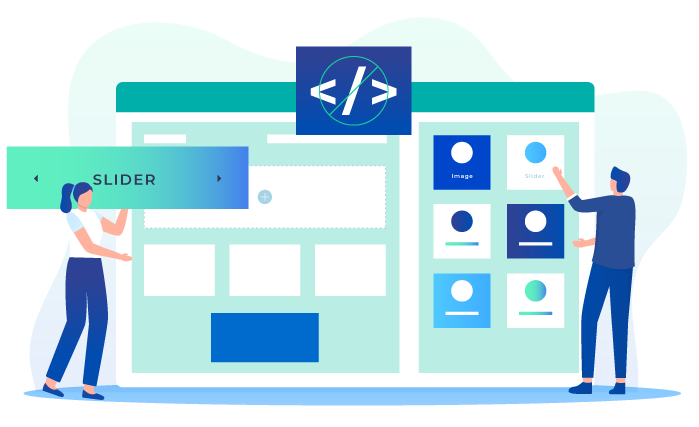Software Development Life Cycle (SDLC) Explained: The Ultimate Guide
Blog: Comidor Blog
The SDLC, or Software Development Life Cycle, is a model that specifies what must be done at each stage of the software creation process. Following a life cycle ensures development teams complete all essential steps for releasing quality software.
Understanding the SDLC helps organizations streamline development and consistently release secure, functional software. This guide covers everything you need to know about the software development life cycle.
What Is the Software Development Life Cycle?
The SDLC outlines the phases software undergoes from initial conception to deployment and maintenance. It provides a well-defined process for building, deploying, and updating software with maximum efficiency.
Each phase produces the deliverables required to progress to the next stage. SDLC models provide a blueprint for managing complex software development projects. Teams can customize frameworks to fit specific methodologies and projects.
Key benefits of utilizing the SDLC include:
- Improved quality control and testing
- Enhanced collaboration between teams
- Streamlined requirements gathering
- More accurate budget and timeline estimates
- Reduced risk throughout development
- Increased customer satisfaction
Well-defined SDLC processes allow organizations to release software faster with fewer defects. Understanding the software development life cycle helps managers improve development times, cut costs, and boost customer satisfaction.
 The 7 Steps of the SDLC
The 7 Steps of the SDLC
While variations exist, most SDLC models contain these core stages:
1. Planning
Every new project begins with planning. In this initial phase, the team defines the scope and purpose of the software.
Key planning activities include:
- Identifying customer needs
- Defining requirements and specifications
- Estimating timelines and costs
- Assessing risks
- Obtaining resources
- Outlining tasks and responsibilities
Thorough planning lays the groundwork for development teams to stay on track throughout the project.
2. Designing
Next, the team creates a software design plan outlining the architecture, interfaces, and components. This stage determines how the software will function, appear, and interact.
Typical design phase deliverables include:
- Interface designs and prototypes
- Database models
- Hardware and software specifications
- Coding standards and frameworks
The design process transforms requirements into a detailed software blueprint.
3. Building
With a solid design plan, developers start building the software in the construction phase. Coding and configuration take place during this step.
The building stage involves:
- Creating new code and interfaces
- Integrating modules and components
- Testing units, classes, and functions
- Conducting code reviews
- Updating documentation
The development team brings the software design to life during this critical phase.
4. Testing
Before releasing the software, the team verifies and validates it works as expected. Rigorous testing identifies defects and code issues.
Testing activities include:
- Functional testing with test cases
- User acceptance testing
- Load and performance testing
- Security testing
- Debugging and fixing defects
Testing ensures the software functions correctly and securely at scale.
5. Deploying
Once the software passes all tests, it’s ready for deployment. The application is installed and configured in production during this stage.
The deployment process involves:
- Training end users
- Transitioning the software into production
- Migrating data
- Cutting over to the new system
A smooth deployment introduces the solution to users with minimal disruption.
6. Maintaining
Even after deployment, development teams continue maintaining and enhancing the software. Updates and patches fix issues and add new capabilities.
Post-deployment maintenance activities include:
- Providing technical support
- Managing configuration changes
- Monitoring performance
- Addressing security vulnerabilities
- Adding new features
- Optimizing speed and scalability
Proper maintenance ensures long-term software success after the initial release.
 The Key Players in the SDLC: Roles and Responsibilities Explained
The Key Players in the SDLC: Roles and Responsibilities Explained
Delivering quality software requires careful coordination between many roles. Here are the key players and their responsibilities in the SDLC process:
- Project Managers oversee the entire project lifecycle. They plan tasks, set timelines, and manage resources.
- Business Analysts document requirements based on input from clients and stakeholders.
- Software Architects design the software framework and infrastructure.
- Developers write, debug, and review the source code.
- QA Testers verify the software works by identifying bugs and defects.
- Release Engineers automate and facilitate the build, test, and deployment processes.
- Security Professionals perform risk assessments and ensure the software is secure.
- Product Managers drive the business objectives and prioritize features.
- Technical Writers create user documentation and training materials.
With clear roles and responsibilities assigned to qualified specialists, development teams can deliver software efficiently.
Selecting the Right SDLC Model
While the SDLC provides an overarching framework, teams must choose a specific methodology for each project. Common SDLC models include:
- Waterfall – Sequential linear stages.
- Agile – Iterative cycles and incremental delivery.
- DevOps – Integration of development and operations.
- Rapid application development (RAD) – Fast-paced adaptive development.
Factors like requirements, team culture, and project size influence the ideal methodology. Most modern teams implement agile frameworks like Scrum to accelerate delivery.
Regardless of the specific model, utilizing the software development life cycle sets projects up for success. A structured SDLC process leads to higher-quality software built securely within budget and schedule.
The Importance of Documentation
Comprehensive documentation provides a roadmap for development teams to build, test, and maintain software applications. Robust documentation at every stage of the SDLC improves process efficiency and product quality.
Document types commonly created during the software lifecycle include:
- Requirements Documents – Outline the business and user needs the software must meet. They are created during planning and inform all downstream processes.
- Technical Specifications – Provide technical implementation details for designers and developers. Specs evolve throughout the lifecycle as the software takes shape.
- Test Plans – Define the testing scope, scenarios, cases, and expected results. Rigorous test documentation contributes to software stability and security.
- User Manuals – Explain how end users complete tasks with the software. Well-written manuals improve the customer experience.
- Maintenance Plans – Help sustain software after deployment. They guide change management and new feature development.
Thorough documentation enables stakeholders to make informed decisions at each stage of the SDLC. It provides continuity when team members change and tribal knowledge is lost. Investing in robust documentation pays dividends in higher quality software that better fits customer needs.
 Choosing the Right Development Tools
Choosing the Right Development Tools
Specialized tools optimize workflows during coding, testing, and deployment. Selecting the best tools for the job accelerates software development and delivery.
Here are key tool categories to consider across the SDLC:
- Source Code Management – Track changes and enable collaboration between developers.
- IDEs – Integrated development environments for writing, running, and debugging code.
- Build Tools – Automate compiling source code and managing dependencies.
- CI/CD Tools – Automate builds, tests, and releases.
- Application Monitoring – Monitor performance and detect issues in production.
- Test Automation – Automate repetitive test cases.
Choosing the right mix of trusted development tools for each project enables teams to deliver higher-quality software faster.
Outsourcing and Offshoring SDLC Work
To access specialized expertise or reduce costs, organizations sometimes outsource or offshore parts of the SDLC. However, outsourcing software development introduces risks around quality, security, and intellectual property.
Here are some best practices for outsourcing SDLC work successfully:
- Perform due diligence to select reputable partners that follow secure SDLC processes.
- Clearly specify requirements and validate capabilities through prototypes or samples.
- Use source code repositories and tools that prevent unauthorized access or leaks.
- Schedule frequent inspections and mandate compliance with internal standards.
- Retain full rights and ownership of intellectual property.
- Build relationships at the executive level for effective collaboration.
- Designate internal team members to manage and monitor outsourced work.
With careful vendor selection, requirements gathering, and oversight, companies can safely outsource aspects of the software development lifecycle. However, organizations must weigh cost savings against potential risks.
 Conclusion
Conclusion
Following a structured software development life cycle allows organizations to create higher-quality applications efficiently. Breaking projects into planned phases reduces risk and sets clear milestones. Careful documentation provides continuity across teams and stages. Utilizing the right tools optimizes development, testing, and deployment.
While outsourcing can provide cost savings, it requires close management to minimize risks. With a solid understanding of SDLC best practices, companies can deliver innovative software, like employee recognition software and other solutions that exceed customer expectations.
The post Software Development Life Cycle (SDLC) Explained: The Ultimate Guide appeared first on Comidor Low-code Automation Platform.
Leave a Comment
You must be logged in to post a comment.







